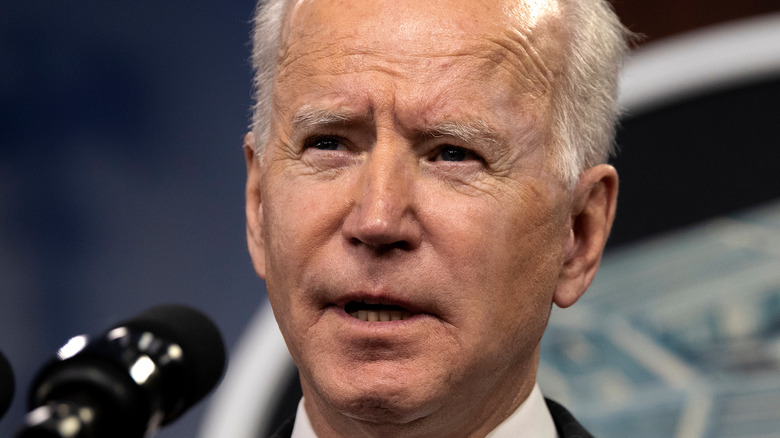3 Key Takeaways From The Biden Administration's Goal To End Hunger
On Tuesday, September 27, 2022, the Biden Administration shared its plan for ending U.S. hunger by the year 2030, via The Hill. Said plan is outlined in a 44-page paper, titled "White House National Strategy on Hunger, Nutrition, and Health." Published by the White House, the paper is apparently intended to dovetail with the agenda for the White House Conference on Hunger, Nutrition, and Health.
Taking place on Wednesday, September 28, the White House Conference on Hunger, Nutrition, and Health is the first of its kind in five decades, according to President Joe Biden, in his remarks, which served as a prologue to the aforesaid 44-page plan. "Yes, there is still hunger in America," the President acknowledged right at the outset. "But over the past 50 years, we have learned so much more about nutrition and the role that healthy eating plays in how our kids perform in the classroom and about nutrition and its linkages to disease prevention."
Accordingly, the Biden Administration's strategies for ending hunger by 2030 are designed not merely to feed those who may find themselves facing food insecurity at any given time, but also to feed them in a way that optimizes nutrition for all — both young and old and all throughout the year, regardless of whether school is in or out.
The paper is impressively dense with data and conclusions drawn by experts in health, nutrition, history, and economics. But the President, himself, boiled it down to three key takeaways.
The Biden Administration's goal to end hunger rests on three essential goals
In his opening remarks at the White House Conference on Nutrition, Hunger, and Health, President Biden reflected on challenges faced by Americans that necessitated his Administration's newly unveiled strategy for eliminating hunger by 2030 while also optimizing the health of Americans who may find themselves facing food insecurity at any given time (via YouTube). He also laid out three fundamental goals.
The first goal is helping "more Americans access the food that will keep their families nourished and healthy." Plans include expanded access to nutritious free meals for more than 9 million children by 2032 — both during the school year and in the summer months, per The Hill. Among some of the ways in which this will be accomplished will be through expansion of Supplemental Nutrition Assistance Program (SNAP) eligibility and summertime-grocery-purchasing assistance for families.
Second, the plan is to "give folks the option and information they need to make healthy dietary choices" (via YouTube). This will include a pilot program by which nutrition and obesity counseling will be offered as part of Medicare and Medicaid plans, per The Hill. Third, the plan is to "help more Americans be physically active." Since many Americans may wish to be active if only they had someplace to do it, this plan includes delivering access to green spaces and other venues where Americans can get out and move their bodies (via The Hill).

